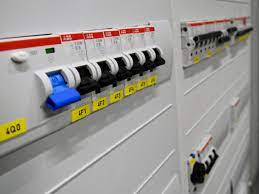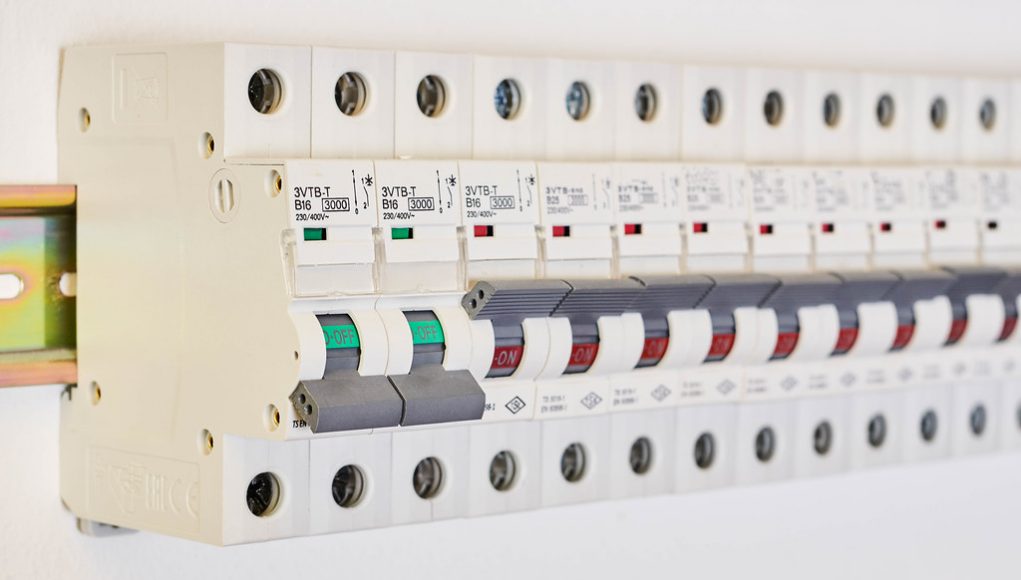Electrical safety must be your top priority when you talk about electrical circuits. To achieve electrical safety, engineers made a lot of safety devices. The primary purpose of these devices is to protect you from electrical accidents. A residual current circuit breaker is also an electrical safety device. Which you must have to use whenever you work on specific electrical systems. A Residual current circuit breaker I an essential safety measure when working on an n electrical system. This device-detect leakage current. This device will automatically switch off the system whenever leakage current flows through any circuit from a defined current or rated sensitivity.
Table of Contents
The appearance of Residual current circuit breaker
The appearance of the residual current circuit breaker is straightforward. You can quickly determine the ON and OFF positions when you see this device. ON and OFF positions of this device are defined by red and green color. When this device is in the OFF position, the green color will be visible to you. And when this device is in an ON state, then red color can be seen in the window of this device.
Short form of Residual current circuit breakers
The short form of the residual current circuit breaker is RCCB, which is made from the first letter of each word. Whenever you see RCCB, you will have to understand that it is a residual current circuit breaker device.
Different types of circuit breaker devices
Many types of circuit breaker devices are available in the market. The closest circuit to RCCB is MCB. A significant difference between RCCB and RCB devices is that RCCB has a unique strip. This strip is called the test stip button. In the RCB circuit breaker, you could not find this stip.
Primary Purpose of RCCB device
The RCCB breakers are made to safeguard people from the dangers of being electrocuted or receiving an electric shock and from the possibility of a fire that is caused by electrical faults or defective wiring. Residual current devices can be highly beneficial, especially when a circuit discovers a sudden and unanticipated earth fault.
Consider a situation where a person is mistakenly in contact with a live wire. When an RCCB has been removed, there is a chance of developing an earth fault, and the victim could be electrocuted. Therefore, it is recommended to put in an RCCB.
Operation of RCCB
In the ideal case, the current that flows via the live wire must be the same as the current that flows to the neutral wire. This is the basic principle upon that the Residual Current Circuit Breaker works.
If there is an earth fault, the current can reach the Earth through accidental methods such as touching the live wire. Because of this, the current returning to the neutral wire decreases. The difference between these two currents is referred to as Residual Current.
RCCB is designed to continuously detect and analyze any differences (actual residual value) between the values flowing between live and neutral wires. Any slight change in the two values could cause the Residual Current Circuit Breaker to shut down the circuit.
Sensing capacity of RCCB
The sensing capacity of RCCB devices varies according to the application of this device. However, a normal human being can bear an electrical shock of up to 30m Amperes. So typically sensitivity of RCCBs is 30-mile amperes. However, you can not say that RCCB is made only for the 30 mumps sensitivity. In the electrical systems where higher residual current can be expected, these systems’ RCCB sensitivity can be increased up to 311 million amperes.
A Residual Current Circuit Breaker (RCCB) is a crucial component for safeguarding electrical circuits. It is a current-detecting device, and anytime a defect develops in the linked course, or the current exceeds the rated sensitivity, it may automatically measure and terminate the connection.
Are RCDs and circuit breakers the same thing?
The significant distinction between a safety switch (also known as an RCD) and a circuit breaker (sometimes known as a fuse) is that the former protects humans from electrical mishaps. At the same time, the latter safeguards your home’s wiring and electrical systems.
Different Classes of residual current circuit breakers
There are three kinds of RCCBs,
- Two-poles RCCB
- Threepolese RCCB
- Four poles RCCB

Two pole RCCB
It is used in a single-phase power supply comprised of neutral and live wires. It has two ends, and the neutral wire and the live wire are joined between them. Using the rotary switch can turn the RCCB off and off. There is also the test button, which assists in testing the performance of the RCCB.
Three Pole RCCB
This type of RCCB is used where a three-phase system is working. In this type of device, one wire is of Line, the second is Neutral, and the Third wire is Erth wire.
Four Pole RCCB
Four Pole RCCB can be used in a supply connection of 3 phases with neutral wire and three-phase wires. There are two ends, where the neutral wire and the 3 phase wires are joined. The only difference is between the four and 2-pole RCCB; however, the rest of the process is the same.
Conclusion
The Residual Current Circuit Breakers (RCCB) is a vital safeguarding device that should be part of your circuit. It assists in preventing dangerous circumstances caused by earth faults. A high-quality set of RCCBs will be particular that nobody suffers an unfathomable injury due to incidents like striking the live wire.
The RCCB options include the NXL-63 Residual Circuit Operated Circuit Breaker, the NL1 Residual Continuity Operated Circuit Breaker that does not have over-current protection (Magnetic), and various alternatives that make your electric home shock-proof.














